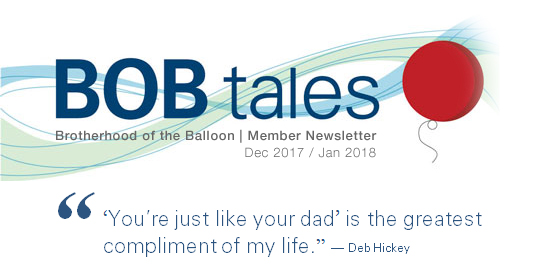
Dear Members (a note from Deb Hickey):
My dad has always been my biggest supporter, my source of inspiration, and my teacher. He taught me many things:
- Put God front and center in your life
- Everything we have comes from God.
- Treat everyone as you wish to be treated
- Exercise and a good diet are the secrets to a long and healthy life.
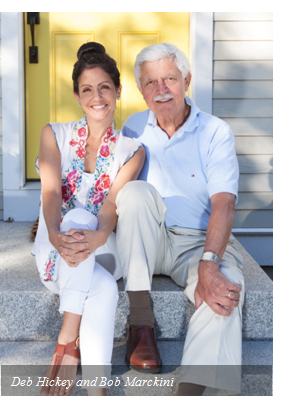 He also taught me about the importance of education; that life is about learning; about taking responsibility; the value of a good book; the importance of laughter; that my words matter and I should choose them carefully. He taught me to give back to my church and community and that I could accomplish anything I put my mind to. He also taught me that family is fundamental and love is our foundation. And finally, he taught me to be grateful for all the blessings in my life.
He also taught me about the importance of education; that life is about learning; about taking responsibility; the value of a good book; the importance of laughter; that my words matter and I should choose them carefully. He taught me to give back to my church and community and that I could accomplish anything I put my mind to. He also taught me that family is fundamental and love is our foundation. And finally, he taught me to be grateful for all the blessings in my life.
I am blessed to be working with my dad in his “ministry.” And a day doesn’t go by when I don’t learn something new from him. We work together on this newsletter and he’s a stickler for research and details, and for using proper sentence structure and grammar. Even to this day, he buys me books on grammar and writing, which we discuss on the phone, chapter by chapter. This is the season for giving thanks, and I’m so thankful for my dad, for what he’s taught me—and continues to teach me—and for his love.
He calls himself a “recovering engineer.” Some of his friends and family members might question the “recovering” part. He does tend to over-research and over-analyze things, and thank God for that. When my dad was diagnosed with prostate cancer 17 years ago, I never doubted he’d find his way to the best treatment available—one that would preserve the quality of his life, allow him to continue being an extraordinary father and husband, and to continue making a positive impact on the world.
I never dreamed back then that he would establish an international prostate cancer support group; write a best-selling book; raise millions of dollars for the medical center that pioneered proton therapy and treated him; or that I’d be working alongside him. As you can see, I have much to be thankful for.
I’m thankful for Loma Linda University Health and Dr. James Slater, who believed that radiation could be delivered more precisely and not damage healthy tissue and vital organs. I thank the team that worked with Dr. Slater to overcome insurmountable obstacles to bring proton therapy to a hospital setting. And I thank Dr. Jerry Slater, who for the past several years has led the Department of Radiation Medicine, as well as basic and clinical research at the proton center.
One way I express my gratitude to LLUH each year is to make a year-end gift to thank them for all they do to continually improve proton therapy and to thank them for saving my father’s life, which has given us all the opportunity to benefit from his efforts to “pay it forward.” My dad does it every day—through answering emails and phone calls from newly diagnosed men, contributing to this newsletter, researching new imaging technologies, new and emerging prostate cancer treatments, participating as a member of the National Association for Proton Therapy, working on the second edition of his book … not to mention finding the time to continue to be the glue that holds our family together. Did I mention he’s been trying to retire for years?
How and why do you do it Dad? I think I know. It’s because you’re a man of God and have devoted your life to helping others.
As we approach the end of 2017, I would like to ask our members to consider expressing their appreciation to Loma Linda University Health by making a gift to proton therapy research or to the Vision 2020 campaign. Do it for the gift of proton therapy that you received as a result of the pioneering work done at LLUCC that made your proton treatment possible, or do it as a way of saying “thank you” to my dad for his efforts on your behalf. Any amount is appreciated and it will be put to good use as you’ll see in this month’s newsletter.
This Month’s BOB Tales
We have a lot of exciting news this month. A new study shows proton therapy patients have significant benefits in disease-free survival as well as quality of life after treatment versus IMRT patients. There are some big changes coming to the prostate biopsy that all our readers should be aware of. And because there is a hereditary component to prostate cancer, you may want to share this information with your family members. There is also new, state-of-the-art imaging used to determine the exact location of tumors in recurrent prostate cancer that allows doctors to treat patients with curative intent. We also have a few interesting member stories in our Giving Back section including two members who, last month, generously donated $10,000 each to proton therapy research at Loma Linda.
Great News—PCORI Proton/IMRT Study Approved
Just before going to press with this newsletter, we received word that the project to conduct a comprehensive head-to-head comparison of proton therapy vs. IMRT for treating prostate cancer was approved by the Patient-Centered Outcomes Research Institute board of directors. This is a significant development!
According to the project leader, Dr. Nancy Mendenhall, UFHPTI medical director, “This will give us the opportunity to finally answer the controversial question of whether protons are better in treating prostate cancer in a study that has been carefully peer-reviewed and which will be funded by a national funding agency.”
Most proton centers in the U.S. will be participating in this study along with a large number of IMRT facilities. Bob and I are members of the project team representing patient stakeholders.
We will present more details on this critically important study in next month’s BOB Tales.
As always, we hope you enjoy this issue. Please let us know how we are doing. Your feedback is important to us.
Deb Hickey
To print the BOB Tales newsletter or view the newsletter with a larger font size, click here for the PDF file.
In This Issue:
- Proton Therapy Trumps IMRT for Prostate Cancer
- Prostate Biopsy Evolution and Exciting Changes
- New State-of-the-Art Imaging Used in Recurrent Prostate Cancer
- Lycopene: Good for You or Not?
- BOB PowerPoint Updated
- The Color of Banana Peels Reveals Benefits
.jpg)
Proton Therapy Trumps IMRT for Prostate Cancer
An October 27, 2017 article in HealthCare Business reported: “Proton therapy may ensure higher survival rates and a decline in complications (emphasis added) among prostate cancer patients, compared to intensity-modulated radiation therapy (IMRT).”
The study was presented by researchers from the Northwestern Medical Chicago Proton Center at the 4th Annual Particle Therapy Co-Operative Group North America (PTCOG-NA) conference in Chicago on October 25, 2017.
This was a retrospective study where researchers reviewed the Medicare and Surveillance, Epidemiology and End Results (SEER) medical records of more than 28,000 IMRT patients and 851 proton patients who underwent treatment between 2006 and 2012.
Proton therapy showed significant benefits in disease-free survival as well as quality of life after treatment (emphasis added) versus the IMRT group: “The five-year overall survival rate was 93.25 percent for proton patients and 88.43 percent for IMRT patients.” When matching intermediate risk patients the five-year survival rates were 93.65 percent for proton and 88.27 percent for IMRT.
Bladder complications were also lower with the proton group as were the rates of secondary malignancies.
Dr. William Hartsell, lead author of the study, is hopeful this new study will prompt private insurers to enroll patients in a randomized trial for evaluating quality of life for patients undergoing proton therapy and IMRT, leading to coverage of proton therapy for prostate cancer.
Prostate Biopsy Evolution and Exciting Changes
We subscribe to Dr. Charles “Snuffy” Myers Prostatepedia, a monthly publication that focuses on prostate cancer diagnosis and treatment. The October 2017 issue (Vol. 3, No. 2) focused on advances in imaging technology that are changing the way prostate cancer is detected and how treatment is planned. We will summarize some of the new developments and how they will change the landscape.
The Old Days
Until the early ’80s—before the PSA test—the only way doctors could determine if there was prostate cancer was to do a digital rectal exam. If an irregularity was felt, then a biopsy would be done—without any imaging. Back then, this “totally blind biopsy” routinely missed cancer. Also, the trans-rectal needle biopsy often resulted in a high incidence of sepsis, bleeding, hospitalization, and infection. An alternative was to do the biopsy through the perineum—the space between the rectum and testes. But to do this, the doctor would have to guide the needle with his finger inserted in the rectum to be sure it hit the prostate—a rudimentary and awkward procedure at best.
Along Comes PSA and Ultrasound Imaging
The PSA test, which came along in the late 80s was a breakthrough. At that time, inexpensive ultrasound equipment was used to provide a cloudy image of the prostate for purposes of guiding the needle during a biopsy.
For the past 30 years doctors have been using the ultrasound-guided needle biopsy to look for cancer in patients with a high, or rapidly rising PSA. The problem with this test is that it is still, essentially, a “blind” test. While ultrasound imaging allows doctors to visualize the prostate and any significant abnormalities, it does not allow them to see small potentially cancerous lesions that should be targeted with the needle. So the test is largely a random sampling of the prostate.
A typical biopsy removes 12 samples—six from each lobe of the prostate. Since the needle samples less than 1 percent of the prostate, some cancers go undetected. And even when cancer is detected, doctors can’t be sure they found the most aggressive cancer in the prostate.
So, if your biopsy results are negative, does it mean you do not have prostate cancer? No. And if your results are positive for cancer, do you know for sure they found the most aggressive cancer in your prostate? Sadly, the answer is also no.
Renowned urologic oncologist, Dr. Raoul Concepcion, director of the Comprehensive Prostate Center in Nashville, TN, says, “Prostate ultrasound and biopsy are the weakest steps in the diagnosis (of prostate cancer).”
An Imaging Breakthrough: Multi-parametric MRI (mp-MRI)
This recent technology can identify suspicious lesions within the prostate before a biopsy is performed. It also helps determine if cancer in the prostate is indolent (non-aggressive)—possibly suggesting Active Surveillance—or if it is more serious, suggesting more aggressive treatment. The key with mp-MRI is finding a medical center that has the latest, most advanced equipment (3 Tesla mp-MRI) and an experienced radiologist to interpret the test results, a challenge in today’s world.
Fusion-guided Biopsies
A significant advancement in prostate cancer detection is the MRI-based fusion-guided biopsy. This is a procedure where an mp-MRI image is overlaid onto an ultrasound image so the biopsy needle can be directed to the suspicious areas identified by the MRI. This has shown to be extremely effective in targeting cancerous lesions in the prostate.
Another advanced technology using mp-MRI involves doing real-time imaging during the biopsy. Both of these procedures are costly and may not be covered by insurance.
Unfortunately, these technologies are not in wide practice as of this writing. The equipment required to image and register the MRI and ultrasound images is costly, and insurance reimbursement rates do not justify the investment. Also not every community is blessed with radiologists who can interpret 3T mp-MRI images, which adds an additional challenge.
Nevertheless, more and more medical institutions are purchasing the equipment, employing this technology, and are beginning to move up the steep learning curve.
In Europe, doctors are beginning to use advanced MRI imaging as a tool to determine whether or not to prescribe a biopsy. The U.S. is behind in this movement.
In Summary
The good news is 3T mp-MRI and Fusion-Guided biopsy technology exists, but sadly, they’re not in wide use at this time. Most urologists are still using 30-year-old trans-rectal ultrasound guided (blind) biopsies to look for prostate cancer.
Clearly, we are moving in the direction of using state-of-the-art imaging to determine if there are any suspicious lesions within the prostate and if so, to help determine if they’re likely indolent or aggressive cancers. MRI images could determine which men need biopsies and which men do not. They will also be providing information on whether there are any suspicious lesions in the margins or within the prostate bed.
No single test such as the 3T mp-MRI or the urine test discussed last month is perfect. But the advances are significant and the latest technology provides much more information than ever before to help in diagnosing prostate cancer and in making critical treatment decisions.
In addition to 3T mp-MRI technology and fusion-guided biopsies, newer, high-resolution ultrasound systems are also on the horizon. These should be of great benefit in targeting suspicious lesions during a needle biopsy. One significant benefit is that a radiologist is not required to read the high resolution ultrasound images.
And, more changes are coming. As Neal Shore, MD, states in the October 2017 issue of Prostatepedia, “Eventually, we will hopefully develop a cost-effective algorithm that combines a panel of all the biomarkers.”
The time is coming when doctors will use these or similar technologies to determine if a patient with a rising PSA even needs an invasive biopsy.
New State-of-the-Art Imaging Used in Recurrent Prostate Cancer
In addition to advanced 3T mp-MRI imaging, which is revolutionizing prostate cancer screening and the old and outdated “blind” biopsy process, there have been several breakthroughs in imaging techniques that can help doctors find traces of prostate cancer in the body when prostate cancer recurs following either surgery or radiation treatment.
Why is this important?
In the past, when cancer returned, it was often not found early enough for curative treatment. Also, many doctors have been quick to prescribe systemic treatment, such as hormonal therapy, because the exact location of the tumors was unknown. When there is a recurrence, the lesion(s) can be either in the prostate bed, in pelvic or abdominal lymph nodes, or in the bones.
If there are just a small number of lesions, generally less than five, doctors often refer to this as oligometastatic disease. And with these new imaging techniques as well as precision targeting treatment technologies, such as proton therapy and focal laser ablation (FLA), doctors can begin to treat oligometastic disease with curative intent. This is a significant development.
New Imaging Technologies
Four of these new technologies include the Auxumin PET/CT Scan, C-11 Choline PET/CT Scan, C-11 Acetate PET/CT Scan, and Gallium 68 PSMA PET/CT Scan.
CT stands for Computerized Tomography, commonly referred to as a CAT scan. CT scanners emit X-rays and generate cross-sectional images of anatomical structures. PET stands for Positron Emission Tomography. PET scans measure metabolic activity and molecular function using a radioactive tracer. PET/CT is a hybrid imaging technique that has been proven to exhibit high diagnostic accuracy and is increasingly being used as a staging tool for patients with suspected recurrent disease.
Typically a small amount of radioactive tracer is introduced into the body through an IV. A PET scanner detects the radioactive tracer’s distribution and displays a computerized image on a computer monitor. These images are reviewed by radiologists to determine if cancer is present, to what degree, and exactly where it’s located.
These four relatively new technologies have capabilities of finding recurrent cancer at early stages and at low PSA levels, in some cases below 1.0 ng/mL. To our knowledge, all but the PSMA scan are FDA approved and in most cases reimbursable by medical insurers.
Lycopene: Good for You or Not?
We’ve believed that lycopene helps fight prostate cancer and that consuming lycopene-rich foods and lycopene supplements is good for you. Well, it looks like there is some truth to this, but there may be some important qualifications.
One of our members brought to our attention a video titled, “Lycopene Supplements vs. Prostate Cancer.” It explains research that was done to determine if high doses of lycopene could prevent precancerous prostate lesions from turning into full-blown cancer.
Back in the 1980s a Seventh-day Adventist study showed that “strong protective relationships were noted with increasing consumption of dried beans, lentils or peas, fresh citrus fruit, raisins, dates and other dried fruit, nuts and tomatoes.” Tomato-based foods, in particular, seemed to be especially beneficial regarding prostate cancer risk. Researchers concluded it was the red pigment in tomatoes, called lycopene that provided the benefit. But, is all lycopene the same? Are lycopene supplements as good as, or better than eating foods, like tomatoes and watermelon, that contain lycopene?
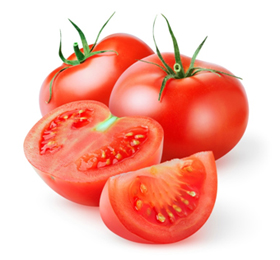 Some studies showed that taking too much lycopene and other carotenoid supplements may be accelerating cancer growth. So which is it? Lycopene in food or small doses in supplements? One study showed that taking lycopene in dietary doses, did, in fact suppress cellular damage, BUT, at higher supplemental doses, it not only appeared to stop working, but caused more cellular damage. And the same results were seen with beta-carotene, another carotenoid.
Some studies showed that taking too much lycopene and other carotenoid supplements may be accelerating cancer growth. So which is it? Lycopene in food or small doses in supplements? One study showed that taking lycopene in dietary doses, did, in fact suppress cellular damage, BUT, at higher supplemental doses, it not only appeared to stop working, but caused more cellular damage. And the same results were seen with beta-carotene, another carotenoid.
There is a fascinating case study, reported in the video, involving a 62-year-old man with advanced, metastatic, terminal prostate cancer, who was sent to hospice to die. The man took it upon himself to begin phytotherapy (plant-based therapy), taking the amount of lycopene found in a quarter cup of tomato sauce or a tablespoon of tomato paste daily.
Almost miraculously, this man’s PSA, which was at 365 ng/mL dropped to 140 the next month, and to 8.1 the following month. Follow-up bone scans showed reduction of bony metastases. He continues to take 10 mg/day of lycopene orally, and at last follow up was asymptomatic.
In summary, the benefits and safety of consuming concentrated plant extracts (phytochemicals) at high doses is unknown and unwarranted at this time. And, it appears that the protective benefits of a phytochemical-rich diet is best obtained from frequent consumption of fruits, vegetables and whole grain products.
As always, it’s wise to consult your doctor before taking supplements or making radical dietary changes.
.gif)
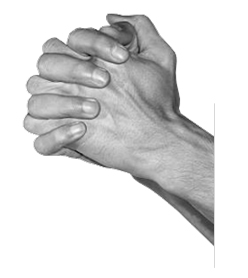
We’ve been producing BOB Tales newsletters monthly for almost 17 years. During this time there have been important articles that many new members haven’t seen, and some older members may have forgotten. So, we decided to periodically re-run some articles from past newsletters. This one is from September 2003.
The Power of Prayer
One of our members sent us an article about prayer. The article was written from a scientific/academic point of view and referred to several studies that supported the theory that prayer works. Following are some excerpts from the article.
“According to Dr. Harold Koenig, an associate professor of medicine at Duke University and the country's leading authority on faith-and-medicine studies, academic research does show that prayer has beneficial health effects, although mainly for the person who does the praying.”
“That prayer can have health benefits appears sufficiently well supported by research data that the American Cancer Society recently declared, ‘Sometimes answers come from prayer when medical science has none.’”
“In one study overseen by Duke University researchers, subjects who both attended worship services and regularly prayed had lower blood pressure than a control group.”
Smart People Pray
“Clearly, Americans as a group think prayer is beneficial for health. A 1999 CBS News poll found that 80 percent of Americans believe prayer improves recovery from disease, and 63 percent believe doctors should pray with patients if asked—though only 34 percent think prayer should be “a standard part of the practice of medicine.”
“The kicker is that a surprising number of scientists agree. Francis Collins, a Darwinian biologist and head of the federal government’s genome-sequencing initiative, says he prays daily. John Houghton, one of the world’s foremost atmospheric physicists, has written articles on the value of prayer. The Nobel Prize-winning physicist Charles Townes, principal inventor of the laser beam, says he prays each day. Pundits might snicker, but if regular prayer composes the mind and confers health benefits, the person who prays is following the intelligent course, regardless of the verity of any religion.”

“I am probably in better shape at 72 than at 45.”
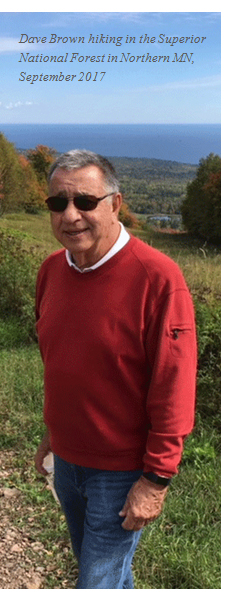 BOB member Dave Brown was treated with proton therapy for his prostate cancer in 2008 at Loma Linda University Cancer Center—he was 64. He recently told us, “I am probably in better shape at 72 than at 45.” It must be the protons!
BOB member Dave Brown was treated with proton therapy for his prostate cancer in 2008 at Loma Linda University Cancer Center—he was 64. He recently told us, “I am probably in better shape at 72 than at 45.” It must be the protons!
“I learned about proton therapy from one of your members—he was the son of my sister’s friend,” Dave said. “I chose proton therapy after talking to him. My main reason is that proton therapy is less invasive than other treatments and offers fewer side effects.”
After Dave and his wife Karen visited LLUCC for a consultation, Dave said making the final decision was easy. “We loved the atmosphere and staff.”
Although Dave admitted he felt tired during the first couple of weeks of treatment, he was back to running, swimming, and playing raquetball by the third week. He also indulged in a weekly massage.
Dave has talked to many men with prostate cancer about the benefits of proton therapy. He tells them to research proton therapy before making a treatment decision. “This includes reading Bob Marckini’s book,” he said.
Dave has learned that the reason some men he speaks with don’t choose proton therapy is because they want the cancer removed from their body. Even after suggesting they read the book and contact the BOB, some still choose surgery and “most have had unacceptable results.” Dave said, “My background is sales and I am disappointed when I cannot convince someone that proton therapy is the best option.”
Nine years after proton treatment, Dave says he feels fortunate to have a completely normal life. “I’ve had absolutely zero side effects.” These days Dave spends his time walking around Lake Harriet in Minneapolis almost daily. And he and Karen spend the winter in Naples, FL playing golf, pickleball, swimming, and walking. Dave is also on the Board of EWI Worldwide, an innovative “experience” marketing company; he travels to attend meetings several times a year.
BOB PowerPoint Updated
The BOB PowerPoint presentation (63 slides) is available to all members. It is intended to 1) educate people on prostate cancer awareness, detection, and prevention; 2) help people understand the prostate cancer diagnosis; 3) provide an overview of the major treatment options; 4) provide information about proton therapy; and 5) encourage people to become educated and proactive in the treatment decision-making process. Detailed speaker’s notes are included.
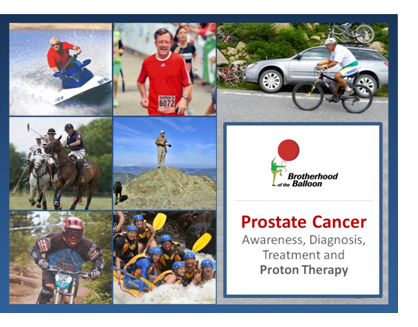 We encourage members to use the presentation to help spread the word about proton therapy and present it at prostate cancer support group meetings, Lions Clubs, Kiwanis Clubs, church meetings, and neighborhood gatherings.
We encourage members to use the presentation to help spread the word about proton therapy and present it at prostate cancer support group meetings, Lions Clubs, Kiwanis Clubs, church meetings, and neighborhood gatherings.
Others have used the presentation as an aid in educating friends and family members about proton therapy. We encourage members to make the presentation their own—delete, add, and edit slides depending on your story and the audience.
We have recently updated the presentation to include the latest imaging technologies and some other general updates.
If you have any questions or would like to receive the BOB PowerPoint presentation, please let us know.

“… LLUCC has earned my support.”
Each month we receive a list of members who have contributed to either the Robert J. Marckini Endowed Chair for Proton Therapy Research or Vision2020 at Loma Linda. We are not told the gift amounts, but we are truly grateful for each gift, and we make every effort to personally acknowledge every contributor.
Last month, Deb reached out to Bob Gates of San Antonio, TX to thank him for his gift to the Marckini Chair. We learned that Bob was diagnosed with Gleason 9 prostate cancer 10 years ago. His doctor recommended da Vinci surgery or standard radiation. About the same time, Bob was introduced to proton therapy by a lady in his church. “She knew two men who had undergone proton therapy at Loma Linda University Cancer Center,” Bob said. “Following that conversation, I made an appointment.”
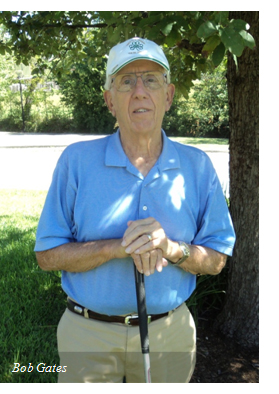 It’s been nine years since Bob underwent proton therapy. He refers to his treatment experience as “beyond words of enjoyment.” His PSA is low and he’s had no side effects. “I could not have had a better experience,” Bob said. “My urologist is so impressed with my results; he’s questioning my original diagnosis!
It’s been nine years since Bob underwent proton therapy. He refers to his treatment experience as “beyond words of enjoyment.” His PSA is low and he’s had no side effects. “I could not have had a better experience,” Bob said. “My urologist is so impressed with my results; he’s questioning my original diagnosis!
Bob’s brother was diagnosed with prostate cancer in 2013. He was treated with proton therapy at the University of Florida Proton Therapy Institute and had an excellent experience and outcome as well.
Deb asked Bob his reason for making a contribution to proton research. Bob replied, “After the life-changing experience I had, LLUCC has earned my support. Also, my wife and I have been in the medical field and understand the value of research. It has to be done to advance both medical and mental health treatment.”
Bob is also on our patient reference list. He has spoken with many men about proton therapy and even gifted a few of Bob Marckini’s books to men he’s met in his community.
Giving Back in More Ways than One
BOB member Guy Farmer of Carson City, NV also made a recent contribution to proton research at Loma Linda University Cancer Center. When Deb reached out to him he said, “I had a very positive experience at LLUCC during the winter of 2009/10 and felt I should give back because of that experience.”
In addition, Guy felt it was important to raise awareness in his community about proton therapy for prostate cancer. He wrote two columns for his local paper, the Nevada Appeal. The first article, My Loma Linda Adventure, was written in 2009. Excerpts from the article are below:
Let me tell you about LLUCC and why I chose to go there for my cancer treatments. A well-established and highly regarded teaching hospital affiliated with the Seventh-day Adventist Church, LLUCC pioneered highly targeted proton therapy for the treatment of malignant tumors of the prostate and other organs. This state-of-the-art medical technology has been in operation at Loma Linda since the early 1990s and its results are quite impressive … The “bible” for those considering proton treatments is a book titled “You Can Beat Prostate Cancer, and You Don’t Need Surgery to Do It,” by Robert J. Marckini, a Massachusetts businessman who was successfully treated at LLUCC a few years ago. Marckini opted for non-invasive proton therapy after thoroughly researching all of his treatment options. Decisive factors were that he would be able to continue his normal activities during treatment with minimal side effects.
Guy’s second article, A Battle against Prostate Cancer, was written in 2010 after his treatment ended.
Year-End Giving
As you plan your year-end giving, we hope you will consider making a gift to either the Robert J. Marckini Endowed Chair for Proton Therapy Research or to Vision 2020 at Loma Linda University Health.
Marckini Chair
The Robert J. Marckini Endowed Chair was established in 2013 through a generous gift from BOB member Chuck Kubicki. Since that time, members have regularly contributed to the chair, often in honor of Bob Marckini, care givers at LLUCC, or family members. The Chair is funded at about $3 million and is supporting important research at LLUCC. Some of the research the Marckini Chair supports includes:
- New treatment sites—240 parts of the body are routinely treated with protons
- Treating new histologic subtypes of cancer—over 200
- Breast cancer treatment research—working on treating advanced breast cancer
- Arteriovenous malformation (AVM) of the brain—especially in pediatric patients
- Hypo-fractionation treatment of prostate cancer—extraordinary results with clinical trials
- Active beam scanning for more precise targeting of certain tumors
- Treating atrial fibrillation of the heart with protons
- Treating neurological pain from war veteran amputees
- Other clinical trials including esophageal cancer, advanced liver cancer, pancreatic cancer, and soft tissue sarcoma
Last month, BOB member Ted Fuller of Warwick, RI generously contributed $10,000 to proton research via the Robert J. Marckini Chair at Loma Linda University Cancer Center. Another BOB member from Georgia also made a $10,000 donation last month. We are extremely thankful for these significant gifts.
Vision 2020
Vision 2020 is a $1.4 billion campaign at Loma Linda University Health to build a new adult hospital, expand the Children’s Hospital, and fund a broad range of research initiatives, which includes proton therapy and prostate cancer.
About $350 million of the $1.4 billion needs to be raised through philanthropy and they are about $80 million from that goal.
About 40 percent of our members have contributed to these efforts, including members who were treated at proton centers other than LLUCC. They do this because they know their treatment may not have been possible if it hadn’t been for the pioneering work done by the folks at LLUCC. BOB members have contributed more than $12 million to various LLUH programs. Some members even contribute monthly!
Bob wants to convey his heartfelt thanks to all who have contributed to these important programs and wants to encourage you to also remember the Marckini Chair and Vision2020 in your year-end giving and your estate planning.
How to Give to Proton Therapy Research
- Donate Online: Visit the LLUCC website.
- Send a Check: Make it out to “LLUCC Proton” with “Marckini Chair” on the memo line and send to: LLUH, Office of Philanthropy, P.O. Box 2000, Loma Linda, CA 92354.
- Make a Call: Contact Elvia DeHaro at 909-558-501
How to Give to Vision 2020
- Donate online: Visit the LLUH website.
- Send a check: Make it out to: “LLUH Vision 2020.” Mail to: LLUH, Office of Philanthropy, P.O. Box 2000, Loma Linda, CA 92354.
- Make a call: Call 909-651-2020.
How to Make a Future Gift
- Make a future gift: Contact Todd Mekelburg at the Office of Planned Giving at Loma Linda University Health at 909-558-5376 or [email protected].
- Other ways to give: Contact Matt Miller at the Office of Philanthropy at Loma Linda University Health at 909-558-3582 or [email protected].


NAPT 2018
The National Association for Proton Therapy (NAPT) is the voice of the proton therapy community—providing education and awareness for the public, professional and governmental stakeholders about the benefits of proton therapy for treating cancer.
Join the NAPT for the sixth annual National Proton Conference, March 25 – 28, 2018, at the Scottsdale Resort at McCormick Ranch in Scottsdale, AZ. The program will cover a variety of interesting and informative topics including: pediatrics, marketing, insurance and appeals, and Proton 101.


The Color of Banana Peels Reveals Benefits
As a banana’s skin changes, so does its inner content. Below is a run-down of what makes each stage of the banana good or not so good.
- The young and green banana is low on the glycemic index; it contains resistant starch—fiber that ferments in your intestines and feeds the good bacteria; and it keeps you feeling full longer.
- The firm, yellow banana is easy to digest and contains antioxidants which help protect the body against disease, aging woes, and inflammation.
- The spotted, yellow banana is an anti-oxidant rich, tumor-fighting powerhouse. The spots indicate the presence of tumor necrosis factor (TNF) that helps to break down abnormal cells in the body.
- The banana that’s leathery brown and soft is mostly sugar; however, it is densely concentrated with antioxidants and TNF. It is also easily digestible.
 Cleaning Kitchen Sponges Doesn’t Work?
Cleaning Kitchen Sponges Doesn’t Work?
Markus Egert PhD is a professor for microbiology and hygiene at Furtwangen University, Schwenningen, Germany. His studies show that sponge-cleaning techniques, such as boiling in hot water, cleaning in a dishwasher, or soaking in bleach do, in fact, reduce germ count temporarily. But germ densities can range from 25 billion to 54 billion per cubic centimeter (That’s half the volume of a marble!), so any reduction is modest, at best. And the germs that survive are the resistant ones that can reproduce rapidly and create a community with an even higher share of potential pathogens. The best action to take? Replace your kitchen sponges weekly.
Grocery Bag Germs
People rarely, if ever, wash their reusable bags according to a recent study. Researchers found large numbers of bacteria, including E. coli, which can make you very sick. One cause is when meat juices drip into the bag. “The bacteria will incubate and multiply,” says Ryan Sinclair, Ph.D., an assistant professor of environmental microbiology at Loma Linda University. You should wash your canvas, cotton or nylon bags regularly at a high temperature with a detergent containing disinfectant, and then put them in the dryer. This can reduce bacteria by 99 percent or more.
Coughing Spell—Give Water?
When people begin coughing while eating, others typically offer a drink of water. Does this help? According to an article in Parade Magazine, it may not. At the back of your throat are two tubes. One is the esophagus that leads to your stomach. The other is the trachea that leads to your lungs. If the coughing is caused by food stuck in your esophagus, a drink of water may help dislodge it and wash it down. But, if the coughing is caused by food in your trachea, water will just get in the way of coughing it out. Even if you stop coughing, any food that gets down into your lungs can cause a serious problem and needs prompt medical attention.
Series: “Make Vegetables Taste Good”
This is the 15th segment on a subject that’s consistent with our Anticancer series. We made it our mission to find recipes that make the most healthful vegetables taste delicious. And, we’ve tried them all!
Vegan Parmesan
This is a little different than our average side dish or dinner recipe—and it isn’t about vegetables—but we think it’s a great recipe and perfect for those who, like Deb Hickey, tend to indulge in mountains of parmesan cheese on their pasta. Note: Cheese is one of the biggest sources of saturated fat in the U.S. diet.
Deb was excited when she recently learned the author of The China Study Cookbook had come out with a “Quick & Easy” version that includes recipes for all sorts of sauces, spreads, purees, and even salsa and mayonnaise.
The recipe below is for “Del’s Favorite Parmesan”—it makes one cup and in Deb’s opinion, tastes very much like freshly grated, gourmet parmesan.
- ¼ cup toasted sesame seeds
- ¼ cup toasted cashews
- ½ cup nutritional yeast
- ½ teaspoon sea salt
- ¼ teaspoon ground caraway seeds
- ¼ teaspoon ground fennel seeds
Directions: Combine all ingredients in a food processor and process until the mixture has the texture of grated parmesan cheese. Do not over-process or you will have parmesan butter! Store refrigerated for up to one month.

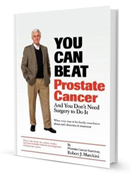
“It was given to me by a dear friend, and I can never thank him or Bob enough.”
Bob Marckini’s book, You Can Beat Prostate Cancer, still shows up in the No. 3 spot on a search for “prostate cancer” in Amazon. Newly diagnosed men are learning that surgery is not the only treatment for prostate cancer; tens of thousands of books are in readers’ hands; 11 proton centers distribute it to prospective patients; and it’s changing people’s lives every day. An excerpt from a recent Amazon review is on the following page.

The information Bob gives is helpful and insightful … Bob addresses all concerns you may have [about prostate cancer] and then some; and does so in an open and up front manner with no agenda of his own … This book was given to me by a dear friend and I can never thank him or Bob enough. —Pastor Ron Martens, 10/18/17
Another reader recently wrote an email to Bob Marckini:
I purchased your book this week. It arrived today and I read it cover to cover before 11pm. Thank you, thank you! What an incredible, highly-chronicled and insightful journey that you took to deciding on proton therapy and life thereafter.
If you found Bob’s book helpful in your journey to proton therapy, please help others find it by posting a review on Amazon. Click on the “Write a Review” button.
You Can Beat Prostate Cancer: And You Don’t Need Surgery To Do It
Buy Online, in Bulk or in Spanish
Online: Paperback: $19.00--•--Kindle: $9.99--•--NOOK Book: $9.99--•--Apple iBook: $9.99
In Bulk: Conctact us for a discount price list. Proceeds from book sales support proton therapy research through the Robert J. Marckini Endowed Chair at LLUCC.
In Spanish: Buy the print version or in eBook format.

 Estate Planning Hints
Estate Planning Hints
BOB Member Ron Hendricks is Director of Gift Planning for Trinity Western University. He regularly copies us on his “News from Ron” mailings, which are helpful hints on estate planning to the readers of his newsletters. We have found Ron’s suggestions to be timely and beneficial. With his permission we periodically share some of his wisdom with our membership. This excerpt from a segment is called…
Convert a Tax Burden to Benefit
If you are 70½ or older you are likely familiar with the IRA required minimum distribution (RMD). Each year, the IRS requires you to withdraw a certain amount from your IRA whether you need the funds or not. Moreover, you pay income tax on every distribution you take. For many IRA account holders, the taxes can be a significant and an undesirable annual burden.
This year, instead of paying more in taxes, use your IRA for a timely purpose. If you are 70½ you may roll over up to $100,000 per year, tax-free, from your IRA to your charities of choice. You will not be taxed on the transfer and it counts toward your required distribution (RMD). Best of all, it’s easy. Contact us or your IRA administrator to see how you can rollover into tax savings.
In summary: The IRA charitable rollover provides several benefits. It allows you to transfer up to $100,000 from your IRA directly to a nonprofit this year. You pay no taxes on the transfer and your gift counts dollar-for dollar to support the important work of your favorite charities. You can also count the gift against your required minimum distribution, which lowers your income and taxes this year.
Did You Know …?
- More people live in New York City than in 40 of the 50 states.
- The word “Pennsylvania” is misspelled on the Liberty Bell.
- There is enough water in Lake Superior to cover all of North and South America in one foot of liquid
- There’s a town in Washington with treetop bridges made specifically to help squirrels cross the street.
- In 1872, Russia sold Alaska to the Unites States for about 2 cents per acre.

Last Month’s Brain Teaser
A wise man is lost in the desert with no water. He encounters a wise guy who is drinking from a jug. Seeing the wise man approach, the wise guy corks the jug. “May I have some of your water, please?” The wise man asks. “I am dying of thirst.”
The wise guy replies, “Yes, but only if you agree to three conditions: 1) You must not remove the cork from the jug; 2) You must not break up the cork or make a hole in it; and 3) You must not damage the jug or make a hole in it.”
The wise man agrees and has a satisfying drink of water.
How does he do it?
Answer: Since the wise guy was drinking from the jug, the wise man knows it isn’t full. So he just pushes the cork down into the jug and has his drink of water.
Winner: Last month’s winner prefers to remain anonymous.
New Brain Teaser (a tough one!)
These words follow a rule: beech, fir, pear, plum
These words don’t follow the rule: birch, cherry, elm, palm
What is the rule?
Send your answer to [email protected] for a chance to win a signed copy of Bob Marckini’s book, You Can Beat Prostate Cancer.
It’s Coming …
Hello! Is this Gordon’s pizza?
No sir this is Google’s pizza.
Sorry, I must have dialed the wrong number.
No sir—Google bought out Gordon’s Pizza a short while ago.
Okay. Take my order please.
Okay sir, would you like your usual?
My usual? You know me?
According to our caller-ID database, your last 12 orders were for pizza with double cheese, pepperoni, and sausage.
Okay, yes—that’s it.
May I suggest this time you just add broccoli and arugula?
What? I hate vegetables.
Your cholesterol is not good, sir.
How do you know that?!
We matched your name and phone number with your online medical portal. We have the result of your blood tests for the past seven years.
Um … okay, but I don’t want those toppings—I take medicine.
You haven’t taken your medicine regularly. We can see from our database, four months ago, you purchased only a box with 30 cholesterol tablets at CVS.
I bought more from another pharmacy.
Such a transaction is not showing in your credit card account.
I paid in cash.
But you didn’t withdraw that much cash according to your recent bank statement.
I have another source of cash.
That is not showing per your latest tax return unless you obtained it from an undeclared income source.
What the …
I’m sorry, sir—we use such information only with the intention of helping you.
Enough! I’m sick of Google, Facebook, Twitter, WhatsApp … I’m going to an island without Internet, cable TV … where there is no cell phone service and no one to spy on me!
I understand, sir, but you’ll need to renew your passport first; it expired six weeks ago.
Secret of a Happy Marriage
A man and woman had been married for more than 60 years. They had shared everything. They had talked about everything. They had kept no secrets from each other, except that the little old woman had a shoe box in the top of her closet that she had cautioned her husband never to open or ask her about.
For all of these years, he had never thought about the box, but one day, the little old woman got very sick and the doctor said she would not recover.
In trying to sort out their affairs, the little old man took down the shoe box and took it to his wife’s bedside.
She agreed that it was time that he should know what was in the box. When he opened it, he found two crocheted dolls and a stack of money totaling $95,000.
He asked her about the contents. “When we were to be married,” she said, “my grandmother told me the secret of a happy marriage was to never argue. She told me that if I ever got angry with you, I should just keep quiet and crochet a doll.”
The little old man was so moved; he had to fight back tears. Only two precious dolls were in the box. She had been angry with him only two times in all those years of living and loving. He almost burst with happiness.
“Honey,” he said, “that explains the dolls, but what about all of this money? Where did it come from?”
“Oh,” she said. “That’s the money I made from selling dolls.”
Quote of the Month:
“Some people try to turn back their odometers. Not me; I want people to know ‘why’ I look this way. I’ve traveled a long way, and some of the roads weren’t paved.” —Will Rogers

The Magic Bank Account
The author is not known. This was found in the billfold of coach Paul “Bear” Bryant, AL, after he died in 1982.
Imagine that you had won the Following *PRIZE* in a contest:
Each morning your bank would deposit $86,400 in your private account for your use. However, this prize has rules and here they are:
- Everything that you didn’t spend during each day would be taken away from you.
- You may not simply transfer money into another account.
- You may only spend it.
- Each morning upon awakening, the bank opens your account with another $86,400 for that day.
- The bank can end the game without warning. At any time, it can say, “game over!” It can close the account and you will not receive a new one.
What would you do?
You would buy anything and everything you wanted right? Not only for yourself, but for all the people you love and care for … even for people you don’t know because you couldn’t possibly spend it all on yourself, right?
You would try to spend every penny because you knew it would be replenished in the morning, right?
Actually, this game is real! Shocked?
Each of us is already a winner. We just can’t seem to see it. The prize is time.
- Each morning we awaken to receive 86,400 seconds as a gift of life.
- When we go to sleep at night, any remaining time is not credited to us.
- What we haven’t used up that day is forever lost.
- Yesterday is gone.
- Each morning the account is refilled, but the bank can dissolve your account at any time without warning.
So, what will you do with your 86,400 seconds? Those seconds are worth so much more than the same amount in dollars. Think about it and remember to enjoy every second of your life, because time races by so much quicker than you think. So take care of yourself, be happy, love deeply, and enjoy life. Start spending!
Don’t complain about growing old. Some people don’t get the privilege.
We would like to wish you all a Merry Christmas, a Happy Hanukkah, and a holiday season filled with peace, joy, and good health. We hope the coming year will be overflowing with all the good things in life.
And, of course—Low PSAs to all!
Bob Marckini and Deb Hickey
To print the BOB Tales newsletter or view the newsletter with a larger font size, click here for the PDF file.
NO MEDICAL ADVICE: Material appearing here represents opinions offered by non-medically-trained laypersons. Comments shown here should NEVER be interpreted as specific medical advice and must be used only as background information when consulting with a qualified medical professional.
